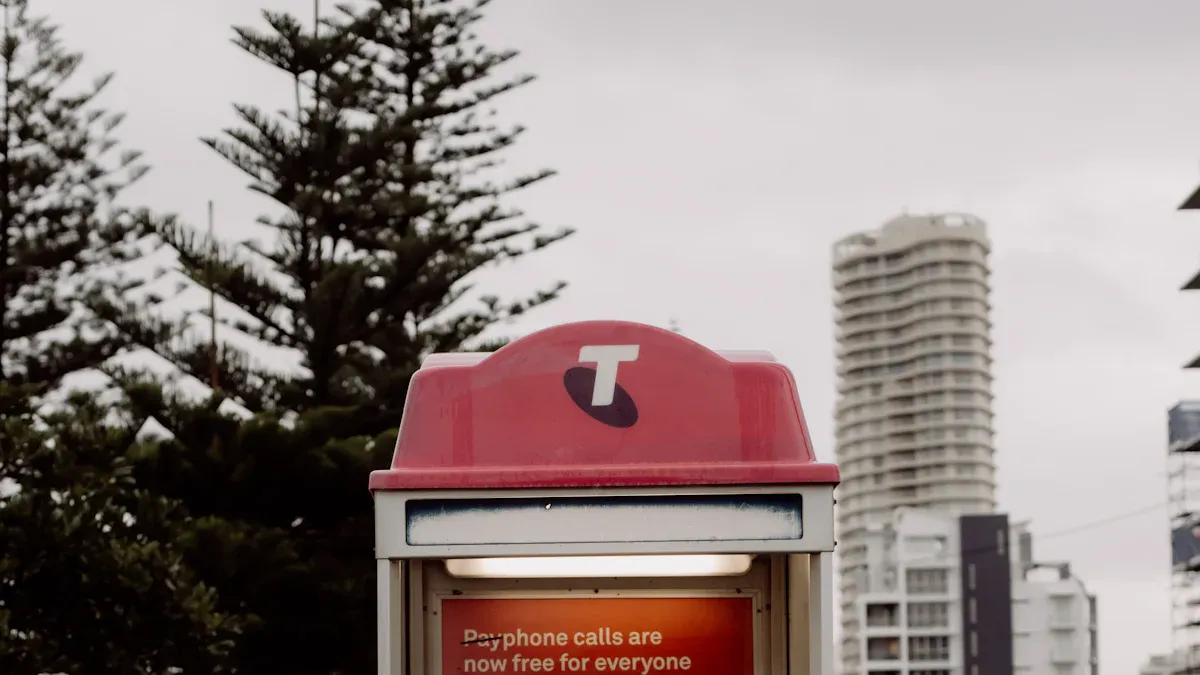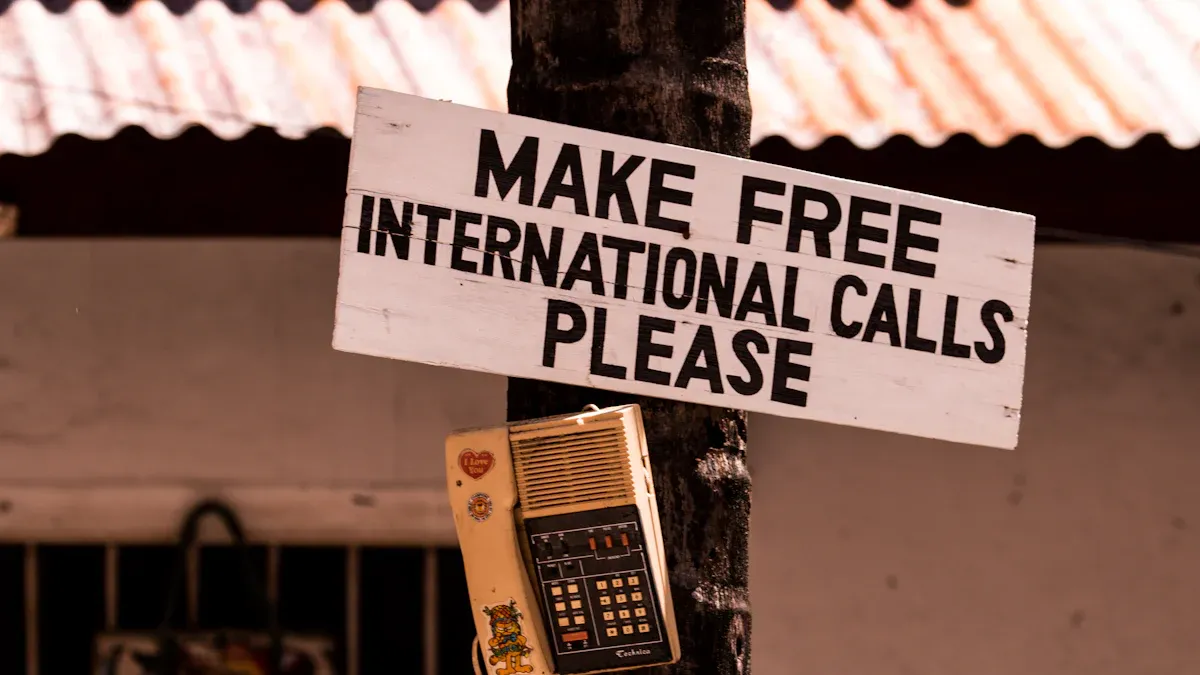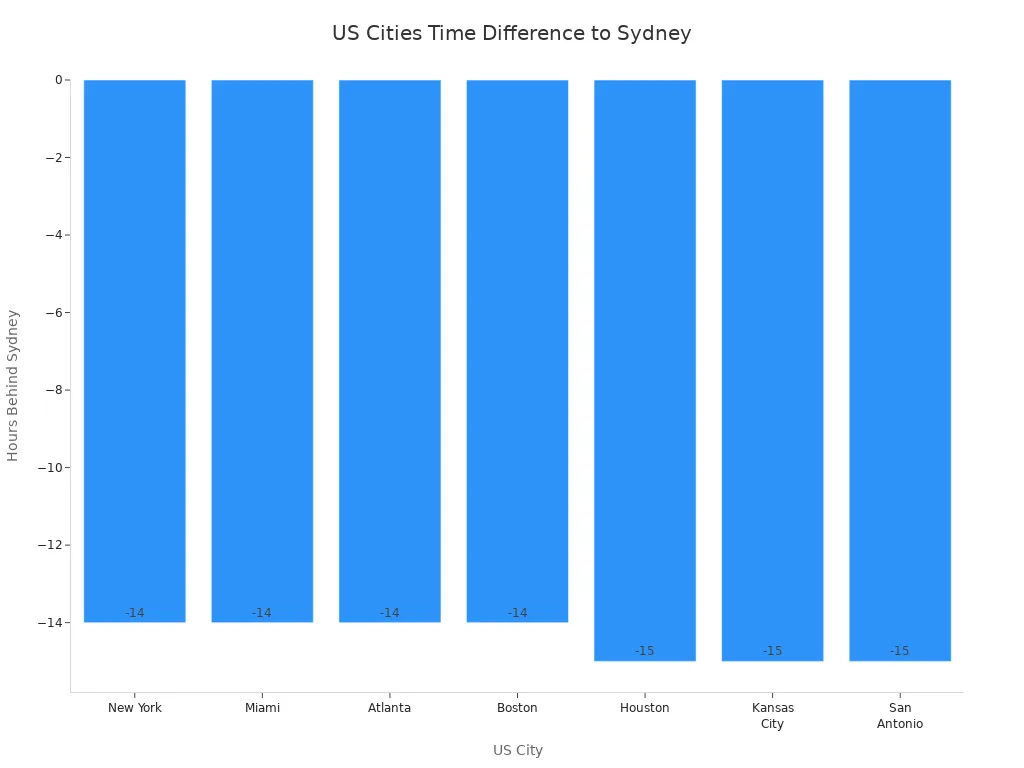- EasyCard
- Trade
- Help
- Announcement
- Academy
- SWIFT Code
- Iban Number
- Referral
- Customer Service
- Blog
- Creator
How to Use Australia’s Calling Code for Easy International Calls

Image Source: pexels
To call Australia from another country, just follow this sequence: dial your country’s exit code, then Australia’s calling code (61), the area or mobile code without the leading zero, and finally the local number. You’ll find that calling Australia is easier than it seems. If you want to call Australia, remember that using the correct country code for Australia is key. Many people make mistakes when they dial Australia, such as:
- Using the wrong dialing format instead of the proper exit code, country code, area code (no leading zero), and number.
- Dialing the local number incorrectly.
- Including the leading zero in the area code, which should be left out when calling internationally.
By following the right steps, you avoid failed calls and connect smoothly every time you call Australia.
Key Takeaways
- Dial your country’s exit code, then Australia’s country code 61, followed by the area or mobile code without the leading zero, and finally the local number.
- Always drop the leading zero from area or mobile codes when calling Australia from abroad to avoid failed calls.
- Know the correct area codes for Australian cities and use the mobile prefix 4 for cellphones after the country code.
- Use VoIP services or international calling plans to save money on calls to Australia.
- Check the time difference before calling to reach people in Australia at a convenient hour.
How to Call Australia

Image Source: unsplash
Landline Calls
If you want to call a landline in Australia, you need to follow a simple sequence. Start by dialing your country’s exit code. This code lets you make international calls. Next, enter Australia’s country code, which is 61. After that, dial the area code for the city or region you want to reach. Remember, you must leave out the leading zero from the area code when calling from another country. Finally, enter the local number.
Here’s a step-by-step guide for how to call an Australian landline:
- Dial your country’s exit code (for example, 011 if you are in the US or Canada, 00 if you are in the UK).
- Enter Australia’s country code: 61.
- Dial the area code for the city, but do not include the zero at the start.
- Enter the local number.
Tip: Always double-check the area code and make sure you drop the zero. This is one of the most common mistakes people make when they call Australia.
Let’s look at an example. If you want to call a landline in Sydney from the US, and the local number is 9342 5678, you would dial:
011-61-2-9342-5678
If you are calling from Canada, the process is the same:
011-61-2-9342-5678
If you are calling from the UK, you would start with 00 instead of 011:
00-61-2-9342-5678
This method works for every city in Australia. Just change the area code for the city you want to reach.
Mobile Calls
To call a mobile phone in Australia, you use a similar process. The main difference is that mobile numbers in Australia start with 04 when dialed locally. When you call from another country, you must leave out the zero and use the country code instead.
Here’s how to call a mobile phone in Australia:
- Dial your country’s exit code.
- Enter Australia’s country code: 61.
- Dial the mobile prefix, which is 4 (not 04).
- Enter the rest of the mobile number.
For example, if the mobile number is 0412 345 678, you would dial:
011-61-412-345-678
This works for any cellphone in Australia. Just remember to drop the zero at the start of the mobile number.
Note: Calling Australia from a cellphone follows the same rules as calling from a landline. You always leave out the leading zero and use the correct country code.
Calling Code Format
When you call Australia, you need to use the right format. This helps your call go through without any problems. The international format for Australian phone numbers looks like this:
- For landlines: +61 [area code without 0] [local number]
- For mobiles: +61 4 [rest of the mobile number]
Here’s a quick table to help you see the difference:
| Type of Call | Local Format | International Format |
|---|---|---|
| Landline (Sydney) | 02 9342 5678 | +61 2 9342 5678 |
| Mobile | 0412 345 678 | +61 412 345 678 |
The plus sign (+) stands for the international exit code. You can use it on most cellphones, or replace it with your country’s exit code (like 011 or 00) when using a landline.
Here are some important things to remember about the calling code format for Australia:
- Always drop the leading zero from the area or mobile code when you dial Australia from another country.
- The country code for Australia is 61. This replaces the zero at the start of the area or mobile code.
- Never put parentheses around the area code when writing or dialing the number internationally.
- Save Australian contacts in your phone using the +61 format. This makes it easier to call Australia from anywhere.
If you follow these steps, you will know exactly how to call Australia, whether you want to call a landline in Australia or call a mobile phone in Australia. Using the correct calling code and dialing sequence helps your calls connect every time.
Area Codes in Australia
Major City Codes
When you make calls to Australia, you need to know the right area codes for each region. Each major city has its own code, which helps your call reach the correct place. Here’s a quick look at the area codes for some of the biggest cities in Australia:
| City | Area Code |
|---|---|
| Sydney | 2 |
| Melbourne | 3 |
| Brisbane | 7 |
| Perth | 8 |
| Adelaide | 8 |
You can see that both Perth and Adelaide use the same area code. This is because some area codes cover more than one city or region.
If you want to call other regions, check out this table for a full list of area codes:
| Area Code | Region Description | Example Cities/Regions Included |
|---|---|---|
| 02 | Central East region | New South Wales (NSW), Australian Capital Territory (ACT), parts of Victoria; e.g., Newcastle, Bathurst, Wollongong |
| 03 | South-east region | Victoria (VIC), Tasmania (TAS) |
| 07 | North-east region | Queensland (QLD) |
| 08 | Central and West region | South Australia (SA), Northern Territory (NT), Western Australia (WA), parts of NSW |
Mobile Prefixes
Australian phone numbers for cellphones always start with the prefix 04. This prefix tells you that the number belongs to a cellphone, not a landline. When you make international calls to an Australian cellphone, you drop the zero and use the country code instead. For example, if you see 0412 345 678, you dial +61 412 345 678 from outside Australia.
Unlike landline area codes, mobile prefixes do not link to a specific city or region. All cellphones across the country use the 04 prefix. You must always dial the full number for cellphones, even if you are in the same city.
Here’s a table to help you see the difference between landline area codes and mobile prefixes:
| Feature | Landline Area Codes | Mobile Prefixes |
|---|---|---|
| Number Format | Two-digit area code starting with ‘0’ + 8-digit local number | Prefix ‘04’ + 8 digits |
| Geographic Assignment | Yes, matches a specific region | No, used for all cellphones in Australia |
| Dialing Rules | Area code can be skipped if local | Always dial all 10 digits |
| Example | (02) 1234 5678 | 04xx xxx xxx |
When you call Australia, knowing these codes helps you reach the right person, whether you are calling a landline or a cellphone. Australian phone numbers follow these patterns, so you can spot the difference right away.
Call Australia from the US
US Exit Code
When you want to call Australia from the US, you always start with the US exit code. This code is 011. It tells the phone system that you want to make an international call. Without this code, your call will not leave the US network. The exit code replaces the plus sign (+) you sometimes see in international numbers.
Here’s how the process works:
- Dial 011. This is the US exit code for international calls.
- Enter 61. This is the country code for Australia.
- Add the area code for landlines or the mobile prefix for cellphones. Remember to leave out the leading zero.
- Finish by dialing the local number.
Tip: The exit code is always the first step when you call Australia from the US. If you use a smartphone, you can often use the plus sign (+) instead of 011.
Example Dialing Sequence
Let’s look at some real examples. If you want to call a landline in Sydney, Australia, and the number is (02) 1234 5678, you would dial:
011-61-2-1234-5678
For a mobile number, say 0412 345 678, you would dial:
011-61-412-345-678
Here’s a quick table to help you see the difference:
| Type of Call | Example Number | Dialing Sequence from US |
|---|---|---|
| Landline (Sydney) | (02) 1234 5678 | 011-61-2-1234-5678 |
| Mobile | 0412 345 678 | 011-61-412-345-678 |
When you call Australia from the US, always check that you have the right sequence. This helps your calls go through without problems. Calling Australia from the US is simple once you know the steps. If you ever get stuck, just remember: exit code, country code, area or mobile code (no zero), then the number. That’s all you need for calling Australia from USA or anywhere in the US.
Avoiding Mistakes
When you make international calls to Australia, small mistakes can stop your call from going through. Let’s look at the most common errors and how you can avoid them.
Leading Zero
One of the biggest mistakes people make when calling Australia is including the leading zero in the area or mobile code. You only use this zero when you call within Australia. If you add it while calling from another country, your call might fail. Many users save numbers as +61 (0)8 9555 1234, but the zero in parentheses is not needed. Some phones, especially after recent updates, might even send the zero and brackets, which can confuse the phone network and block your call.
Tip: Always remove the zero before the area or mobile code when you call Australia from abroad. For example, dial +61 8 9555 1234, not +61 (0)8 9555 1234.
Here are some common mistakes with the leading zero:
- Saving numbers with (0) in your contacts.
- Letting your phone’s dialer add the zero automatically.
- Forgetting to check the number format before you call.
Wrong Code
Another problem is using the wrong code. People often mix up landline area codes and mobile prefixes. Sometimes, they forget to add the country code for Australia or use the wrong exit code for their country. This can lead to failed calls or reaching the wrong person.
Here’s a quick list of frequent dialing errors:
- Forgetting to add +61 for Australia.
- Mixing up landline area codes with mobile prefixes.
- Misformatting the number sequence.
- Overlooking the ‘04’ prefix for mobile numbers.
To avoid these mistakes, double-check your dialing sequence before you call:
- Check if you are calling a mobile or landline in Australia.
- Make sure you leave out the leading zero.
- Confirm your phone can make international calls.
- Dial your country’s exit code.
- Add 61 for Australia.
- Use the correct area code or mobile prefix. 7. Enter the local number.
Taking a moment to review these steps can save you time and cost. You will connect your calls to Australia smoothly and avoid frustration.
Saving on International Calls

Image Source: unsplash
VoIP Options
You can decrease the cost of calls to Australia by switching to VoIP services. These services use the internet instead of traditional phone lines, which helps you save money. Many people find that the cost of calling Australia drops a lot when they use VoIP. Here are some top options:
- JustCall offers budget-friendly plans for international calls to Australia. You do not need extra hardware, and you get clear call quality. Features include call recording, voicemail-to-email, video conferencing, SMS, and support for many devices. JustCall also gives you 24/7 customer support and lets you set business hours.
- Global Call Forwarding and United World Telecom both start at $7.95 per month. They cover over 150 countries, including Australia. You get features like call forwarding, advanced routing, caller ID management, and voicemail to email.
| Provider | Starting Price (USD) | International Coverage | Key Features |
|---|---|---|---|
| Global Call Forwarding | $7.95/month | 150+ countries including Australia | Call forwarding, advanced routing, caller ID, IVR, CRM integration |
| United World Telecom | $7.95/month | 160+ countries including Australia | Call forwarding, call recording, IVR, voicemail to email, online management |
Using these services can decrease the cost of calls to Australia and help you manage your international calling needs.
Calling Plans
You can also decrease the cost of calls to Australia by picking the right international calling plan. Many providers offer plans that lower the cost to call Australia and make it easier to stay in touch. Here is a quick look at some popular options:
| Provider | Monthly Fee (USD) | Coverage for Australia | Features | Notes |
|---|---|---|---|---|
| AT&T | $15 | Unlimited calls to Australia (included in 85+ countries) | Unlimited calling to 85+ countries, discounted rates to 140+ countries | Requires a postpaid wireless plan with unlimited talk |
| World Plan | $17.99 | Unlimited calls to landlines and mobiles in Australia | Unlimited calls to landlines in 60+ countries, mobiles in 12 countries | 15% Federal Universal Service Fund fee, 3.9¢ connection fee (waived with plan) |
| World Plus Plan | $25.99 | Unlimited calls to landlines and mobiles in Australia | Unlimited calls to landlines in 70+ countries, mobiles in 40+ countries | Same as above |
These plans offer flexible options, like unlimited subscriptions or pay-as-you-go. You do not have to worry about contracts or hidden fees. Picking the right plan can decrease the cost of calls to Australia and help you control your spending.
Time Zone Tips
Before you make international calls, always check the time difference. Australia is far ahead of the United States. For example, Sydney is 14 hours ahead of New York and 15 hours ahead of Houston. If you want your call to reach someone at a good time, plan ahead.

Here is a quick table to help you:
| US City | Time Difference to Sydney |
|---|---|
| New York | -14 hours |
| Miami | -14 hours |
| Atlanta | -14 hours |
| Boston | -14 hours |
| Houston | -15 hours |
| Kansas City | -15 hours |
| San Antonio | -15 hours |
Tip: Try calling in the early morning in the US. This matches up with evening in Australia, which is often the best time for both sides.
By using VoIP, picking the right plan, and checking the time, you can decrease the cost of calls to Australia and make sure your international calls go smoothly.
You can call Australia easily if you follow these steps:
- Dial your country’s exit code.
- Enter 61 for Australia.
- Add the area or mobile code without the zero.
- Dial the local number.
- Press call.
Tip: Always double-check the number before you call. Dropping the leading zero is important.
Looking to save money? Try these apps:
| App Name | Cost-saving Features |
|---|---|
| VoipStunt | Free calls, low rates |
| mytello | No contracts, up to 90% savings |
| Yolla | No hidden charges, low fees |
Check the time in Australia before you call. If you found this guide helpful, bookmark it or share it with friends.
FAQ
How do you know if a number is a landline or mobile in Australia?
Australian landlines start with area codes like 2, 3, 7, or 8. Mobile numbers always begin with 04 when dialed locally. When calling from abroad, mobile numbers start with 4 after the country code.
Can you use the plus sign (+) instead of the exit code?
Yes, you can. Most smartphones let you use the plus sign (+) before the country code. It works the same as the exit code. Just hold down the zero key on your phone to enter the plus sign.
What should you do if your call to Australia does not connect?
Check the number format. Make sure you left out the leading zero in the area or mobile code. Confirm you used the correct exit code and country code. Try again after double-checking each step.
Are there extra charges for calling Australia from the US?
Yes, international calls often cost more. Your phone provider may charge higher rates. You can save money by using VoIP services or international calling plans. Always check the latest rates in USD before you call.
Can you call Australian toll-free numbers from outside Australia?
You usually cannot reach Australian toll-free numbers from other countries. These numbers only work within Australia. If you need to contact a business, look for their regular phone number or email address.
This guide shows you that with the right knowledge, you can master international calls to Australia and avoid high costs. But while you’re saving money on communication, what about your cross-border financial needs? Sending money to friends, family, or business partners in Australia can come with its own set of confusing rules, high bank fees, and slow transfer times. You need a financial tool that offers the same simplicity and affordability you now expect from your international calls. This is where BiyaPay offers a modern, transparent solution for all your global financial needs. Our platform enables real-time exchange rate queries and conversions for a wide range of fiat and digital currencies, with remittance fees as low as 0.5%.
With BiyaPay, you can move money across borders with the speed and efficiency you expect. Our fast registration and support for same-day delivery to most countries and regions worldwide help you avoid the delays and high costs of traditional banking. Whether you’re sending a simple payment or a large business transfer, our platform is designed to make your cross-border finances simple and efficient. Don’t let confusing fees and slow transfers hold you back. Open a secure account with BiyaPay in minutes and experience a new standard for global finance. Register now to streamline your international transactions.
*This article is provided for general information purposes and does not constitute legal, tax or other professional advice from BiyaPay or its subsidiaries and its affiliates, and it is not intended as a substitute for obtaining advice from a financial advisor or any other professional.
We make no representations, warranties or warranties, express or implied, as to the accuracy, completeness or timeliness of the contents of this publication.




Contact Us
Company and Team
BiyaPay Products
Customer Services
is a broker-dealer registered with the U.S. Securities and Exchange Commission (SEC) (No.: 802-127417), member of the Financial Industry Regulatory Authority (FINRA) (CRD: 325027), member of the Securities Investor Protection Corporation (SIPC), and regulated by FINRA and SEC.
registered with the US Financial Crimes Enforcement Network (FinCEN), as a Money Services Business (MSB), registration number: 31000218637349, and regulated by FinCEN.
registered as Financial Service Provider (FSP number: FSP1007221) in New Zealand, and is a member of the Financial Dispute Resolution Scheme, a New Zealand independent dispute resolution service provider.




















